



It's hard to know where to begin with Zero no Tsukaima: whether to start by gutting the laughable excuse for a plot, perhaps castigating the clockwork collection of characters, or perhaps even starting on the atrociously simplistic animation and aesthetics. From all of this one could be certain that it is a show without merit, and while critically that is true, there are several aspects which I'm sure could make this a guilty pleasure for a select few.
the alarming regularity at which seemingly uninvolved characters turn up on supposedly secret outings
Based off a series of light novels by the same author as "Green Green", Noboru Yamaguchi, and produced by JC Staff, the series has penalties before it even begins. The first episode does nothing to allay these worries and produces cliché after cliché in both characters and plot. The protagonist is a failing mage called Louise who summons an affable idiot from modern day Japan into Tristein Magic Academy; already it is fighting against other "fish out of water" anime and the obvious inspiration from Harry Potter. The rest of the series carries on regardless and stumbles through hackneyed and quickly ignored plot points and culminates in a poorly orchestrated and wholly expected "battle" intermingled with predictable character hook-ups.
Read the rest of this entry
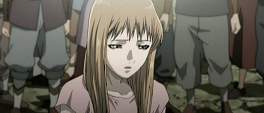
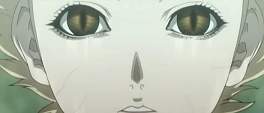
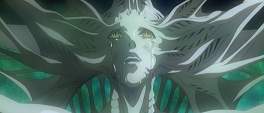
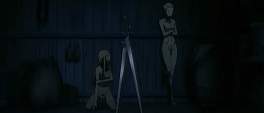
Claymore's hook is the presence of blonde, nubile young ladies with the titular, impossibly large swords set in a fantastical, medieval world. Being able to move past this premise is the first of many things that this series manages to do well, unfortunately it is marred by a plethora of other niggling problems which turn what could have been a great series into one that, overall, is lamentably mediocre.
Putting more than twenty slim, blonde females into a dark and snowy mountain town probably sounded a lot better on paper
Claymore goes wrong by being indecisive as to what it is trying to be and what it is trying to convey. The lithe girls with swords bait is more or less ignored from the outset with a surprising lack of fan-service and obvious lesbian undertones; this creates a problem with what is essentially a shounen series. The "monster of the week" cliché is dispatched with swiftly and a story unravels which thrusts the protagonist, Clare, from one hopeless battle to the next. Neither the story nor the characters are enough to carry this off, its one saving grace is the speed at which the story moves. Not so much adapted, but lifted straight from the manga, the series works on a "one episode, one chapter" progression which means otherwise tedious story elements and swiftly dealt with and otherwise enjoyable combat set-pieces drag on far too long.
Read the rest of this entry
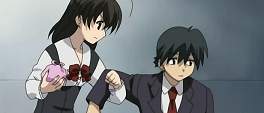


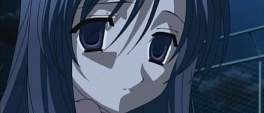
I'm sure like many others I was enthralled by the story that the final episode of School Days had been indefinitely postponed due to a supposedly violent ending and its likeness to a real-world killing. Not one to pass up on controversy, I queued up the series expecting it to be a fluffy, real-world version of Shuffle! or perhaps akin to Kimi ga Nozomu Eien; what I didn't expect was an unflinching, overly-dramatic portrayal of the depths of teenage decrepitude.
the series' H-game roots are only evident in the amount of sexual deviance present
The first episode of this petite twelve episode series is as mediocre and clichéd as I expected: introverted loner Makoto takes a liking to a girl he sees on the train, female best friend tries to help him get together with her while secretly having the warm-and-fuzzies for him herself. Rolling my eyes and switching off my sensibilities I began to place bets on the most promising axe-wielding female: perhaps the fun-size, silent one is actually a dark-horse in all of this. It took less than half the series to convince me that ending with violence is just one of the punches that School Days will deliver.
Read the rest of this entry




It's hard to describe Lucky Star without using words such as "meta" or "proto", or comparing it to similar all-female high-school comedies such as Azumanga Daioh or School Rumble or perhaps drifting into expletives about the circular Suzumiya Haruhi references by Kyoto Animation. The concept to take away from Lucky Star is that it is relevant to compare it to all of these things, and brutally unfair.
some of the late-to-the-party characters seem ignored compared to the tried and tested Kagami x Konata tiffs
Lucky Star shines because it manages to not so much parody but lampoon modern otaku and anime by, paradoxically, being a fan pandering anime itself. The first episode was divisive in that many wrote off the long soliloquies as boring or blatantly obvious as to their purpose, this weaned off the Haruhi refugees like a brick wall. In retrospect the meandering script changed little in delivery or tone from the last episode to the first episode, unlike the aesthetics which, while universally well animated, showed how much the animators settled in to drawing the characters. The first episode did brilliantly in laying down the foundation of the rest of the series, characters were expanded upon and new ones introduced, but the humour and pacing remained.
Read the rest of this entry















